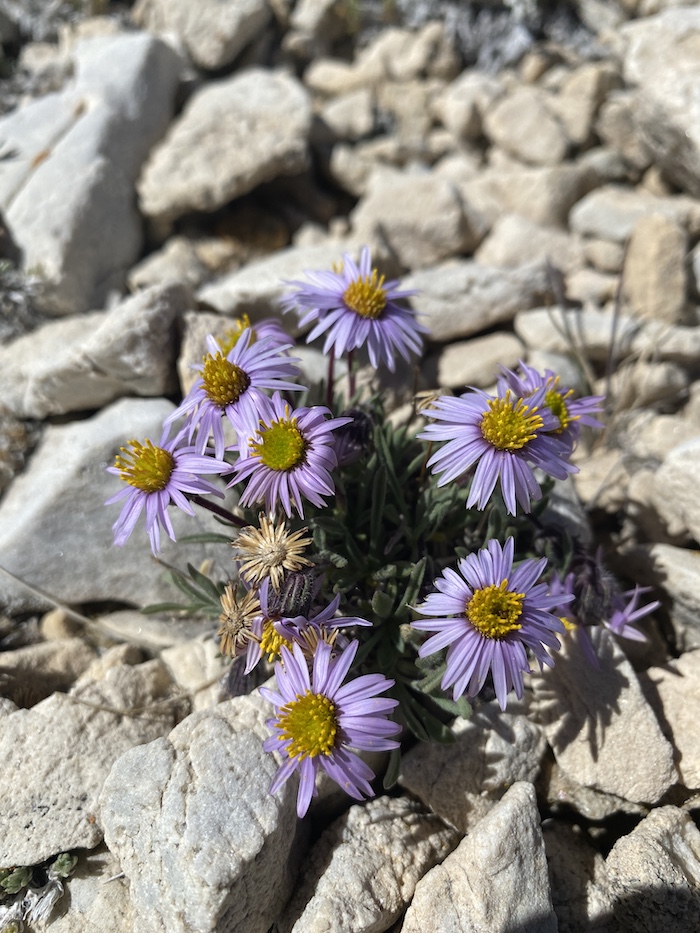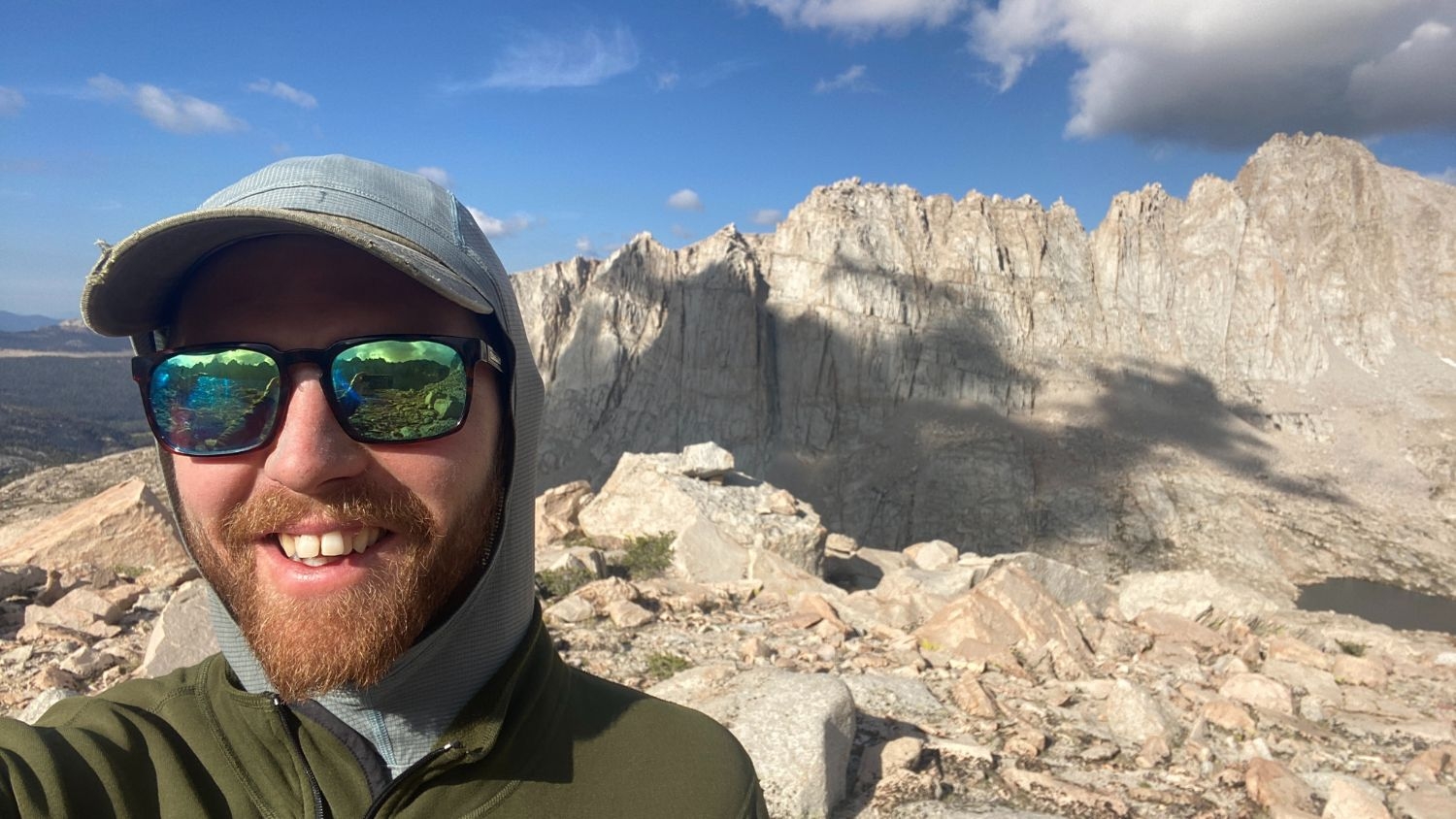California native Kaleb Goff found a career by taking his interest in the outdoors to its highest level – 14,000 feet, above sea level, in fact, where he studies alpine plants.
“I was a kid who was trying to find bushes to crawl around in among the suburban Southern California sprawl,” explains Goff, who is now a rising third-year doctoral student in North Carolina State University’s Department of Plant and Microbial Biology.
As he got older, Goff went from exploring ravines behind apartment buildings in San Diego to identifying plants in entire ecosystems while studying ecology and evolutionary biology at the University of California, Santa Cruz.
“I showed up as an undergraduate and said, ‘I wonder if I could learn the names of every plant in the Redwood Forest,’” Goff recalls. “Then I did that pretty quickly, and then I said, ‘Oh, I guess I should move to the meadow. That has more species, and they’re a little more complicated.”

Now he’s studying the current and future impacts of climate change on alpine plant species on summits of the Sierra Nevada Mountains and the Great Basin in California and Nevada, which Goff describes as “some of the most extreme environments on Earth.”
Starting Mountain Research
Goff’s interest in mountain ecosystems began while working at Yosemite National Park as an undergraduate student. After helping with social science research, he transitioned to working with educational programs, eventually becoming a park ranger naturalist. He worked at Yosemite for eight summers.
“It was a huge passion of mine to talk to people and show them things,” Goff says. “But in doing that, I got more excited about answering questions. I also got really excited about alpine plants and alpine systems in general, places above treeline at 13,000 to 14,000 feet.”

Eager to enroll in a graduate program, Goff reached out to a nonprofit called GLORIA Great Basin, which surveys mountain summits in the Sierra Nevada and Great Basin. The science director, Seema Sheth, is also an assistant professor at NC State, and she was excited to work with Goff. The Sheth Evolutionary Ecology Lab is based on campus in Raleigh, so Goff moved across the country without ever having set foot on campus.
“It felt risky, but it’s been really fun,” Goff says. “I’m a birder, so last year I got to see warblers that I’d never seen in my life. I usually go to the mountains every weekend to go biking, and I make some trips to the coast.”
One of his favorite bike trips has been to the top of Mount Mitchell, which sits at 6,684 feet above sea level.
“The smell of the spruce and pine, and getting to look around, feel that strong wind and see all the other people there who are having an incredible time, I think it’s pretty similar (to Yosemite),” Goff explains. “The huge ridges and being able to stare off into the distance, I feel like that has a similar effect on us, whether it’s at 13,000 feet or 6,000 feet.”
Identifying Alpine Species
Mount Mitchell can have extreme weather, but it’s not quite as daunting as the mountains Goff studies. In winter, many of his field sites have a mean annual temperature of less than zero degrees Celsius, or 32 degrees Fahrenheit. The summers are also difficult.

“In summer, when we’re there, it’s a pretty harsh place to work. It can be cold, but it’s also just blazing sun up there. There’s no shade because it’s above the trees,” he says. Then there’s strong wind, and a monsoonal effect, so there can be giant thunderstorms and hail and snow in summer. It’s a wacky, close-to-space environment.”
Despite the extreme environments, there’s life on the summits, including the plants that Goff — who’s also part of the Kenan Institute Climate Leadership Program — studies.
“There’s this idea that plants on mountaintops, which are adapted to cold climates, are long-lived and have limited ability to disperse to other places, might be driven off the tops of mountains towards extirpation and extinction,” Goff explains. “They have no other place to go during climate change.”
For his research, Goff climbs to the top of the summits. He maps out research plots starting at the top and moving down, finding and identifying every species within each plot.
“It’s powerful knowing and bearing witness to these places.”
“We find and identify every single species because one of the questions we’re interested in is if certain species are appearing or disappearing. Because of the plants’ sizes, we need to crawl around on our hands and knees,” Goff explains.
He also looks at the evolutionary relationships and plants’ unique traits.
A Surprising and Hopeful Result
So far, Goff has found that the plant populations in his study area have been mostly stable over the last nearly 20 years.
“That’s a really surprising result and hints at the potential for alpine community resilience in the face of climate change,” Goff explains.
While this is good news, Goff’s research doesn’t stop there. He says climate change impacts could be instead more regionally focused, impacted more by water availability than temperature. As he continues his research, Goff feels lucky to have the opportunity to go where others don’t.
“I love being a naturalist and knowing those places intimately,” Goff says. “It’s powerful knowing and bearing witness to these places. There are not many people on this Earth that are going to these alpine summits or mountaintops every single summer.”
This post was originally published in College of Agriculture and Life Sciences News.
- Categories:



